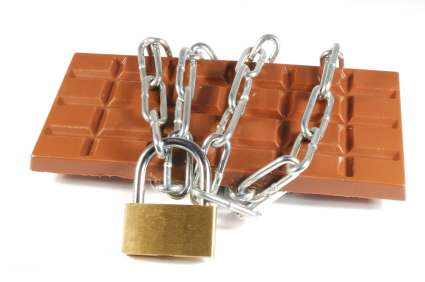Yesterday, I officially started a low nickel diet.
Prior to this, I’ve been eating a lot of items on the high nickel diet, as an informal test case I suppose. I wanted to see if increasing my nickel intake would indeed increase my symptoms. It did. Very much! So, now I’m testing the low nickel diet. I’m tired of being itchy!
Researching a low nickel diet is not the easiest thing – there is a lot of conflicting, random information on the internet. This is what I’ve verified so far:
Nickel is naturally found in many food sources, predominantly plant-based food sources. The amount of nickel in any given plant will vary based on growing environment – soil conditions, fertilizers and pesticides used, etc. However, on average, nickel content is naturally higher or naturally lower in certain plants.
 Cocoa is naturally high in nickel.
Cocoa is naturally high in nickel.
Incredibly high levels of nickel can be toxic for humans, but the trace amounts found in food and the environment are not dangerous to the average person (and are debatably beneficial). But we’re not average, are we?! I’ve found multiple conflicting values for what the “average” daily intake of nickel is, but in test cases performed in a Danish study in 1984, an oral intake of 600-5600µg of nickel provoked eczema in nickel sensitive patients.[1] I take that to mean that to reduce my chance of symptoms, I want to keep my nickel intake to below 600µg/day.
That same Danish study lists the nickel amounts in common foods (common to Denmark, unfortunately). This gives me an idea of what I’m dealing with. Lots of sites simply list “don’t eat this” information, or “eat in moderation”, but what does that actually mean? I mean, let’s face it, if we all knew how to “eat in moderation”, there wouldn’t be so many diet commercials on TV! So, I wanted real numbers.
The chart below lists some of the worst offenders. Remember, to make sense of this, you have to take into account how much you would actually eat. For example, although oatmeal has less nickel per gram than cocoa, you would typically consume a larger amount of oatmeal at once than you would of chocolate (hopefully!). One serving (1/2 c) of oatmeal is about 40g, giving you 70µg of nickel. One cup of hot chocolate is about 5g of cocoa, giving you 49µg of nickel. Both amounts are still very high, so with a little math, it’s easy to see how quickly your daily intake can surpass 600µg.
|
Nickel content |
mean µg/g |
|
Cocoa |
9.8 |
|
Soy beans |
5.2 |
|
Soy products |
5.1 |
|
Soy products |
5.1 |
|
Walnuts |
3.6 |
|
Peanuts |
2.8 |
|
Oatmeal |
1.76 |
|
Dried legumes |
1.7 |
|
Spinach |
0.52 |
|
Canned beans |
0.45 |
Doing all that math every time I sit down to eat, though, isn’t really my idea of fun! Your doctor should be able to provide a low nickel diet list for you. It is best, in the beginning, to follow the “eat this, don’t eat that” rules provided by your physician. Once your symptoms are under control, you can experiment with other foods. That list should also be more specific to your geographic area or culture.
For reference, the Penn State Hershey Medical Low Nickel Diet patient handout can be found on the internet at: http://www.pennstatehershey.org/c/document_library/get_file?uuid=0888ec6e-3d2f-4766-833e-b38bd920ffcd&groupId=102184
[1] Flyvholm, Mari-Ann, Gitte Daslgaard Nielsen and Allan Anderson. "Nickel Content of Food and Estimation of Dietary Intake." Zeitschrift für Lebensmitteluntersuchung und -Forschung A, 1984, Volume 179, Number 6, Pages 427-431.